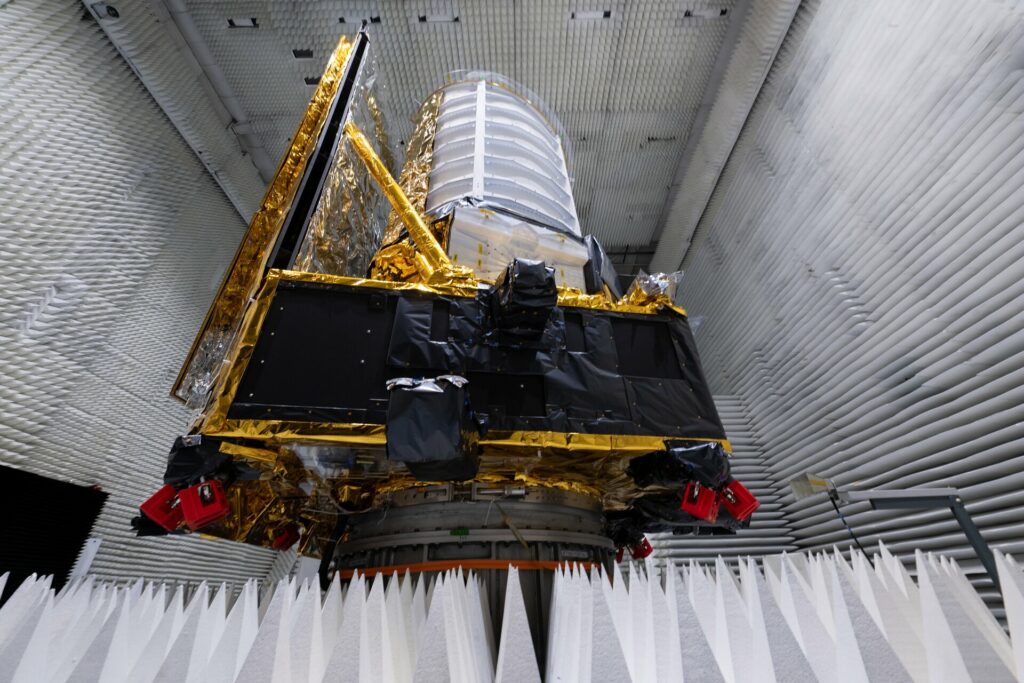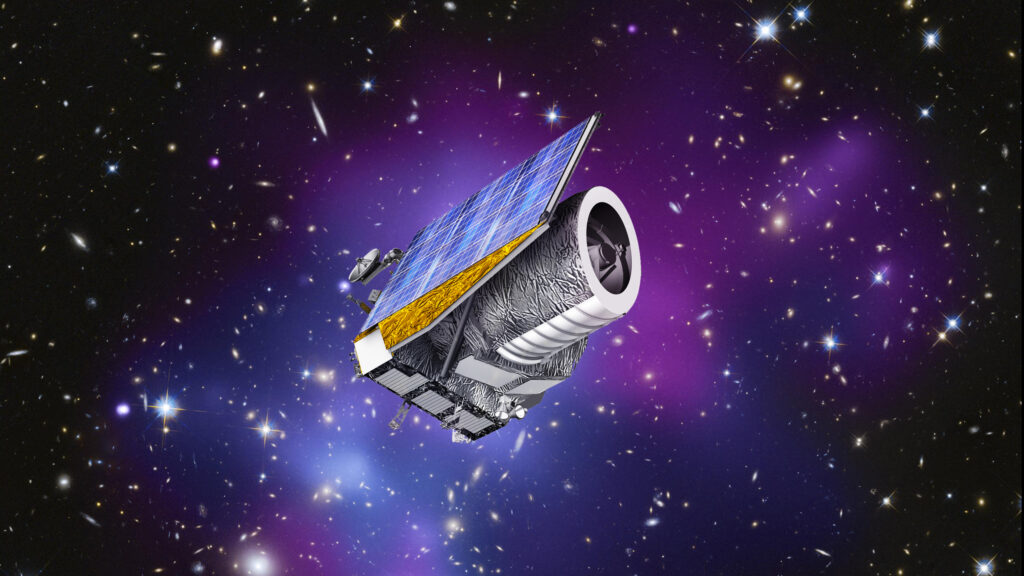The Euclid Space Telescope has successfully passed electromagnetic compatibility tests. This was stated in a message published on the ESA website.
Electromagnetic compatibility test
In preparation for launch, all spacecraft undergo a series of tests designed to certify their readiness to work in outer space. One of them is checking for electromagnetic compatibility. Its purpose is to make sure that during operation, the systems and instruments of the spacecraft do not create interference that can interfere with each other’s work.

The test is carried out in special chambers, which are a Faraday cage, shielded from all external electromagnetic radiation. Its inner surface is covered with a special material that absorbs radio signals and prevents their reflection.
The Euclid electromagnetic compatibility test was performed at the Thales Alenia Space testing center in Cannes. The device successfully passed it. According to the ESA statement, the test was one of the last steps towards preparing the telescope for the upcoming launch.
Purpose of the Euclid telescope
Euclid is designed to study the history of the expansion of the Universe, the formation of its large-scale structures, the distribution of dark matter and dark energy. For this purpose, the telescope will carry out high-precision measurements of the redshifts of distant galaxies (within a radius of up to 10 billion light-years from the Milky Way). In total, its observations will cover about a third of the sky. Updated data on the relationship between redshift and distance would help astronomers better understand how the Universe acquired its current form.

The construction of the telescope was carried out by a consortium that included 2,000 scientists from more than 300 scientific institutions from 13 European countries. The project was also supported by the USA, Canada and Japan. To fulfill the tasks set, Euclid was equipped with a 1.2—meter mirror. The scientific filling of the device is represented by two instruments: a visible radiation visualizer (VIS), as well as the Near Infrared Spectrometer and Photometer (NISP).
Euclid will be put into orbit around the Lagrange point L₂ of the Sun—Earth system. A Falcon 9 rocket will be used for the launch. Initially, it was planned to use a new Ariane 6 carrier for the mission, but due to delays with its commissioning, ESA had to change the launch operator. At the moment, the launch of Euclid is scheduled for July 2023.
According to https://phys.org
Follow us on Twitter to get the most interesting space news in time
https://twitter.com/ust_magazine
